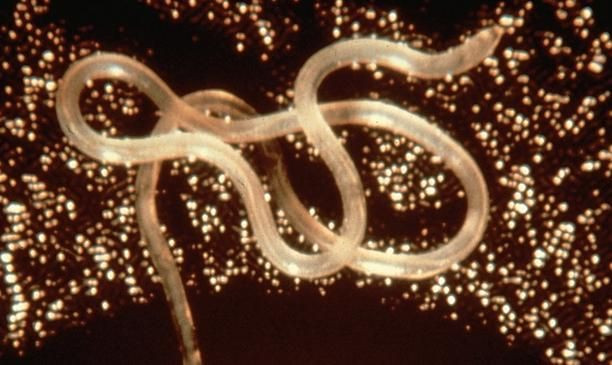Tapeworms In Humans Can Transmit Cancer Cells, CDC Discovers

Tapeworms are nothing new to the medical community. They get inside people through infected meat, lay their eggs, and often cause gastrointestinal symptoms including vomiting, diarrhea, and abdominal pain. What is new, however, is the idea that these unwelcome little parasites could infect humans with tumors.
Scientists from the Centers for Disease Control and Prevention (CDC) were surprised — and disturbed — to find that a “cancer-like” illness discovered in a 41-year-old man was believed to have been caused by a tapeworm.
The Case
In January 2013, a Columbian man went to doctors complaining of fatigue, fever, cough, and serious weight loss. He had previously been diagnosed with HIV, but was “nonadherent” to therapy, according to the New England Journal of Medicine report on the case. Doctors found that the man was heavily infected with tapeworms called Hymenolepis nana and had developed multiple tumors in various parts of his body.
A biopsy revealed that his lungs and lymph nodes were full of tumors unlike anything doctors had seen before. They were 10 times smaller than normal human cancer cells, for one.
“These tumors looked similar to human cancer, but initial CDC lab studies revealed the cancer-like cells were not human,” the CDC said in a statement.
As doctors investigated, the patient’s condition worsened, and he died in a few months. The tests had already revealed the most startling information about the case, though. The clusters of tumor cells had the same DNA as the tapeworms infecting the man’s body.
An Unprecedented Discovery
At first, researchers weren’t sure what they were dealing with, said Atis Muehlencachs, a CDC pathologist in the special unit that deals with unexplained illnesses. He told the Washington Post that the cells possessed a cancer-like pattern, but they fused together in a way that was very rare for human cells. Researchers thought at first that the cells could be a new, infectious kind of organism, but after discovering that the cells contained Hymenolepis nana DNA, they knew they were facing something else altogether.
“In the initial months, we wondered if this was a weird human cancer or some unusual, bizarre emerging protozoa-amoeba-like infection,” Muehlenbachs said. “Discovering these cells had tapeworm DNA was a big surprise — a really big surprise.”
He said that this case is the first time the CDC has seen parasite-derived cancer cells spreading within an individual.
We know viruses and bacteria are capable of causing cancer — the human papillomavirus is infamous for causing cervical cancer, and the bacteria Helicobacter pylori is capable of causing stomach cancer. But until now, no one knew tapeworms were capable of the menacing feat.
“We think this type of event is rare,” Muelenbachs told NBC News. “However, this tapeworm is found worldwide and millions of people globally suffer from conditions like HIV that weaken their immune system. So there may be more cases that are unrecognized. It’s definitely an area that deserves more study.”
Looking Forward
The findings of the case are a cause for concern. We’ve known for a while now that certain animals are susceptible to cancer, while others are nearly immune. Until now, though, there had been no evidence that a human parasite could harbor cancer cells and transfer the condition to people. The American Cancer Society recognized that certain parasites were capable of raising the risk of developing cancer in humans, but never of carrying the cancer itself.
The discovery also leads to questions concerning the cancer’s origin, and whether other kinds of organisms that live in or on people could be capable of transferring mutant cells. The Washington Post reports that scientists have emphasized in recent years that the human body’s ecosystem is made up of only 10 percent human cells, and 90 percent microbial cells.
Though the transmission capabilities of certain microbes is still unclear, the CDC does not believe that there is any risk of the tapeworm cancer cells being spread from person to person.
The case should spur more research into this “cancer-like” disease, and the capabilities of parasites and other microbes in terms of transmission.
“The host-parasite interaction that we report should stimulate deeper exploration of the relationships between infection and cancer,” the authors conclude in the report.
Source: Muehlenbachs A, Bhatnagar J, Agudelo C, Hidron A, Eberhard M, mathison B, et al. Malignant Transformation of Hymenolepis nana in a Human Host. New England Journal of Medicine. 2015.



























